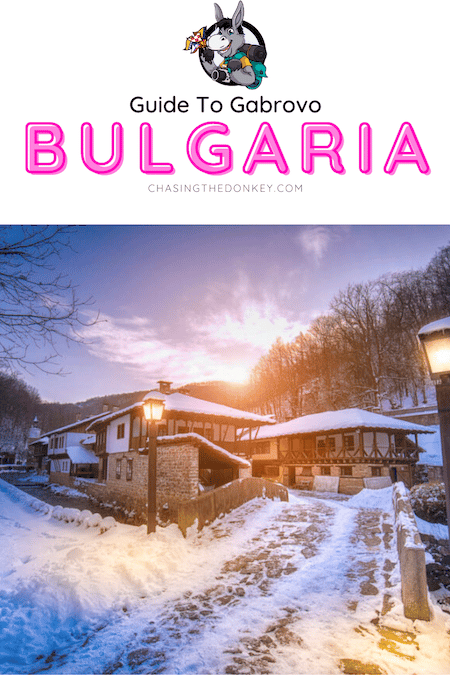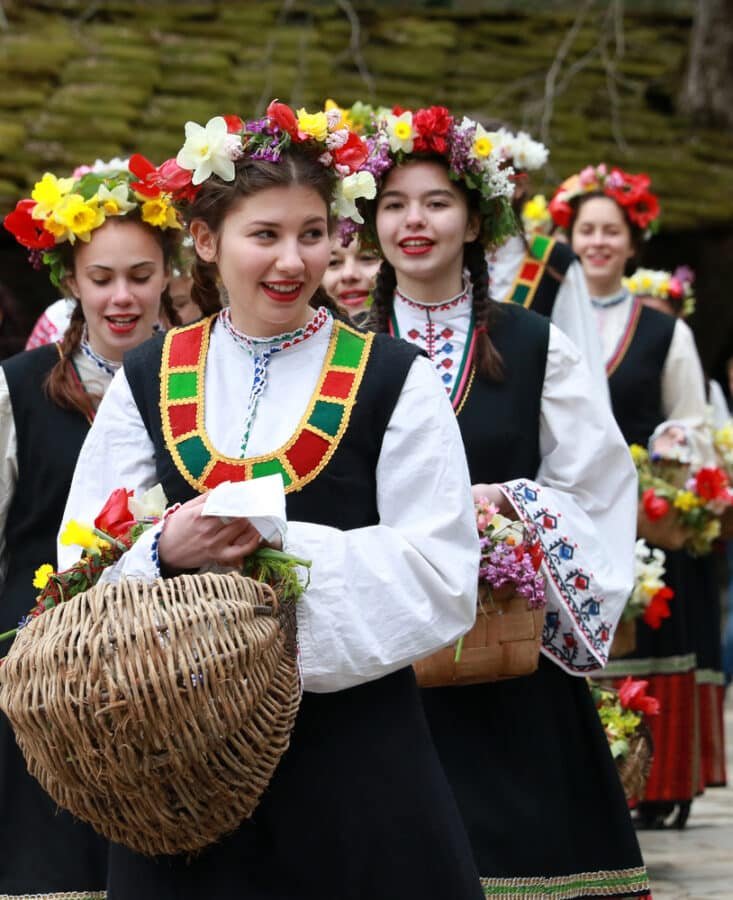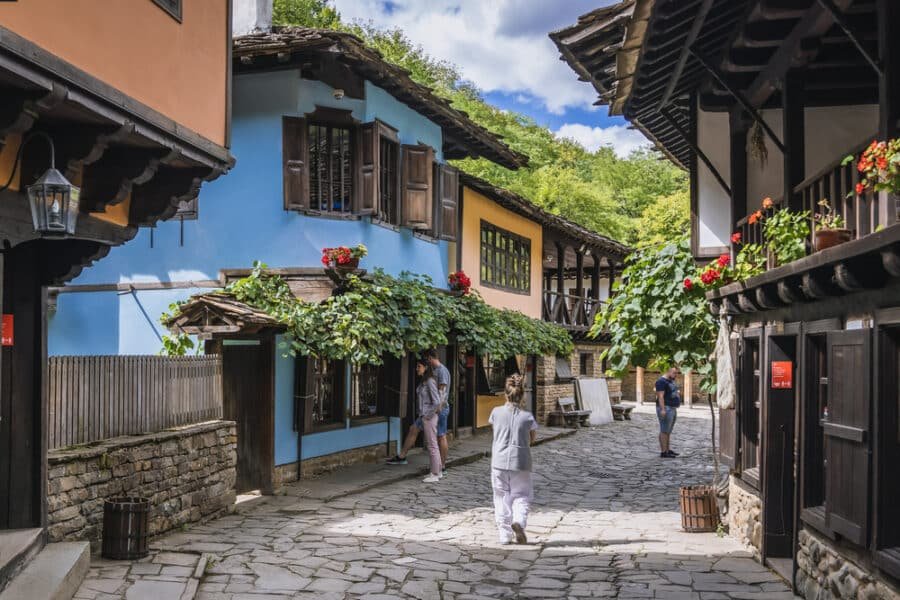Here is all the Gabrovo, Bulgaria travel advice that you need. We’ve got a list of things to do in Gabrovo, top sites, and tips for where to stay in Gabrovo.

The town of Gabrovo is located at the foot of Stara Planina near the Shipka pass. It stretches for about 25 kilometers along the Yantra River. Gabrovo is known among the population of Bulgaria as the city of laughter. It houses the unique House of Humor and Satire, where every visitor returns to childhood and forgets about cares.
No less well-known is the fact that it was in Gabrovo that the first high school, “April High School,” was built, which was founded in 1835. Gabrovo’s primary and important sights are Clock Tower, Assumption Church, Dechkova House, and Etara Craft Complex, among others.
Skip Ahead To My Advice Here!
How To Get To Gabrovo

Bus
The city of Gabrovo is connected to larger cities and the surrounding areas by bus transport. There are buses from
- Sofia
- Sevlievo
- Kazanlak
- Tryavna
- Dryanovo
- Ruse
- Plovdiv
Railway Transport
The town of Gabrovo is the last station of the Varbanovo-Gabrovo railway line. The trains pass through Svishtov and Tsareva Livada.
By Car
The town of Gabrovo is located about 220 kilometers from Sofia in the Northeast direction, 46 kilometers from Veliko Tarnovo in the Southwest direction, about 30 kilometers from Sevlievo in the Southeast direction, and about 50 kilometers from Kazanlak in the North direction.
Public Transport
The city has an internal city transport of buses that connect all parts of the city.
Things To Do In Gabrovo

The city has several cultural and historical attractions with which you can immerse yourself in its spirit, the most important of which are:
The Home Of Humor And Satire
The Home of Humor and Satire was founded on April 1, 1972. It is the only such home in the world. It collects and reflects the work of over 150 masters of humor across the globe in ten halls.
Ethnographic Exhibition “Urban Way Of Life At The End Of The 19Th Century.”
It is presented in the Dechkova kashta, which was built way back in 1835. Visitors can see a music room with a piano, a ladies’ and a men’s drawing room, a bachelor’s room, and the mayor’s office.
National April High School
The building of the National April High School began in 1851. It has been a cultural monument since 1979. Since 1889, it has been called the Aprilov High School in honor of Vasil Aprilov, after whom the Gabrovo School was named. In front of the high school, there is also a monument to Vasil Aprilov from 1935.
The National Museum Of Education
It is housed in the building of the National April High School. The museum is on the List of 100 National Tourist Sites and is in the 19th place in it. It was created in 1974. It is the only specialized museum in Bulgaria that preserves and reflects how education was conducted years ago.
The Regional History Museum – Gabrovo
In the museum, visitors can see Paleolithic finds such as a cave bear, ancient human bones, tools, etc. They were discovered in the Bacho Kiro cave, which is among the 100 national tourist sites. It is located near the Dryanovsky Monastery in the West direction. The museum has four departments: the “Archaeology” Department, the Department “Of Bulgaria 15th – 19th century”; the Department “Of Ethnography” and the Department “Of New and recent history.”
The Art Gallery “Hristo Tsokev”
The art gallery was opened in 1974. Hristo Tsokev is the first artist from Gabrovo who has a special education. He was born in 1847. His earliest works of art date back to 1867, when he was only 20 years old: “Portrait of an Old Monk” (NHG) and “Archimandrite Arsenius Moskvin” (NHG). Examples of icons are presented in the gallery’s permanent exhibition from the Trevnen School of Painting.
The Architectural-Ethnographic Complex “Etar”

The architectural-ethnographic complex “Etar” was opened in 1964. It is included in the List of 100 National Tourist Sites and is in the 19th place in it. It is the first museum of its kind in the country. It is located about 8-9 kilometers from the city. The only collection of folk water technology, containing ten objects, is stored there.
National Astronomical Observatory And Planetarium – Gabrovo
The star hall of the planetarium has 50 seats for visitors. It shows the Earth’s sky from every point of view on the planet. The astronomical observatory is equipped with the American telescope “Celestron 14”, with scientists observing the Sun, the Moon, other satellites, planets, etc.
Bay Bridge (Bayov Most)
Master Mincho Stoyanov built the bridge in honor of the people of Gabrovo who participated in the April Uprising. It was built in 1855. It is one of the city’s symbols and has been declared a cultural monument.
The Zoo
The zoo in the city of Gabrovo was established in 1973. There are 150 animals and birds of nearly 40 species in it.
The Monument Of Racho Kovacha
The monument of Racho Kovacha is located on a rock in the river Yantra. According to legend, he is the founder of the city of Gabrovo.
Church Of The Holy Virgin
It was built in 1865 by the master Usta Gencho Kanev. It is located in the center of the city of Gabrovo, next to the Baev Bridge.
Brands We Use And Trust
Take A Day Trip From Gabrovo
Waterfalls
If you are in Gabrovo, you can diversify your day even more by walking to the two waterfalls near the villages of Ivanili and Solari. The larger one is very scenic, and the hike to the falls is short, easy, and pleasant. In its upper reaches, the same river forms another beautiful waterfall between the villages of Spantsi and Kozi rog – Upper Ivanilovski waterfall.
Veliko Tarnovo
Less than an hour’s drive away is Veliko Tarnovo. This is one of Bulgaria’s most exciting cities, drawing in many tourists with its impressive architecture, castles, museums, and historic sites. Especially history lovers will have a field day in this centuries-old city in north-central Bulgaria.
Move This Adventure To Your Inbox & Get An Instant Freebie

No spam. Unsubscribe at any time.
Where To Stay In Gabrovo, Bulgaria
The town has 18 hotels and over 30 guesthouses, most of which are built in an authentic and rustic style. Tourism in Gabrovo is highly developed and one of the main sectors of the economy.
The appearance and authentic vision of the city attract thousands of tourists who wish to immerse themselves in its history and culture.
Gabrovo also has eight restaurants, some of which offer authentic local cuisine combined with traditional Bulgarian dishes.

